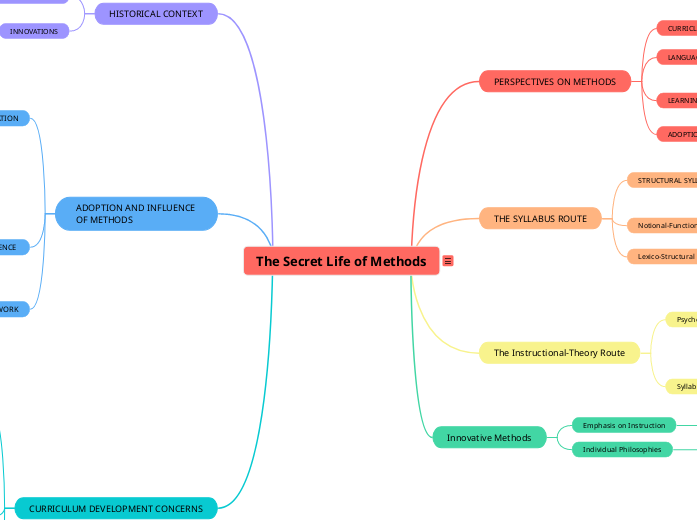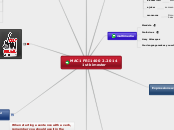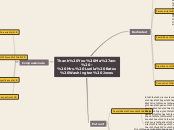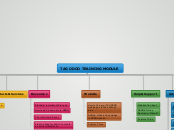The Secret Life of Methods
The secret life of methods
CURRICULUM DEVELOPMENT CONCERNS
Experimental Design Importance
Comparison of pre-test and post-test results.
True experimental design needed to validate method effectiveness.
Accountability and Evaluation
Examples of Evaluative Studies:
Wagner and Tilney's study on Suggestopedy and Superlearning.
Need for empirical research on communicative language teaching methods.
Studies often lack rigorous evaluation designs.
Importance of empirical evidence to support method effectiveness.
Curriculum Development Phases
Many methods lack empirical validation. Effective curriculum development requires rigorous evaluation and evidence-based practices,
Evaluation (Formative, Summative)
Selection of Learning Experiences
Task Analysis
Situation Analysis
Needs Analysis
Goal Setting
ADOPTION AND INFLUENCE OF METHODS
SUPPORT NETWORK
Academic and Institutional Support
Influence of university adoptions and educational agencies.
Methods need legitimacy from academics and educational institutions.
PUBLISHING INFLUENCE
PERISH
PUBLISH
Role of Publishers
Independent Presses
Less influence, often self-published.
Examples: Asher’s, Curran’s, Gattegno’s methods.
Influence method adoption through widespread dissemination.
Prefer methods that can be easily marketed via textbooks.
Examples: Notional-Functional, Communicative approaches.
FORM AND PRESENTATION
Teacher-Dependent Methods
Examples: Lozanov's and Gattegno's methods.
Lower adoption rate due to the need for training.
Requires special training.
MATERIALS-BASED METHODS
Examples: Audiolingual, Communicative.
Text-based methods have a higher adoption rate.
Textbooks embodying principles.
HISTORICAL CONTEXT
INNOVATIONS
Newer approaches emphasize communicative functions and learner-specific needs
the notional-functional syllabus and English for Specific Purposes (ESP)
EARLY METHODS
Focused on vocabulary and grammar, leading to structured approaches like the structural-situational and aural-oral methods.
Innovative Methods
Individual Philosophies
Each method reflects the creator's beliefs about learning
Emphasis on Instruction
Less focus on content, more on teaching methods
The Instructional-Theory Route
Syllabus as an Outcome
Teacher-developed syllabuses
Syllabus develops from instructional procedures
Psycho-Linguistic Theory
Learning strategies
Conditions for effective learning
Methods Examples:
Silent Way
Problem-solving and minimal teacher intervention
Counseling-Learning (C-L)
Emotional support and community
Total Physical Response (TPR)
Language linked to physical actions
THE SYLLABUS ROUTE
Lexico-Structural vs. Communicative Approaches
Shift from traditional to communicative
Notional-Functional Syllabuses
Emphasis on functions and situations
Communicative needs (e.g., ESP, Threshold Level)
STRUCTURAL SYLLABUSES
Vocabulary-focused
Grammar-focused (e.g., Structural-Situational, Audiolingual)
PERSPECTIVES ON METHODS
ADOPTION AND INFLUENCE
influence the popularity of methods
LEARNING CENTERED
Emphasize how people learn. prioritizes instructional strategies and teacher-student interactions. Ex:Total Physical Response (TPR) and the Silent Way
LANGUAGE CENTERED
Focus on grammar and vocabulary, such as the structural-situational and audiolingual approaches, which emphasize systematic syllabuses
CURRICLUM DEVELOPEMENT









